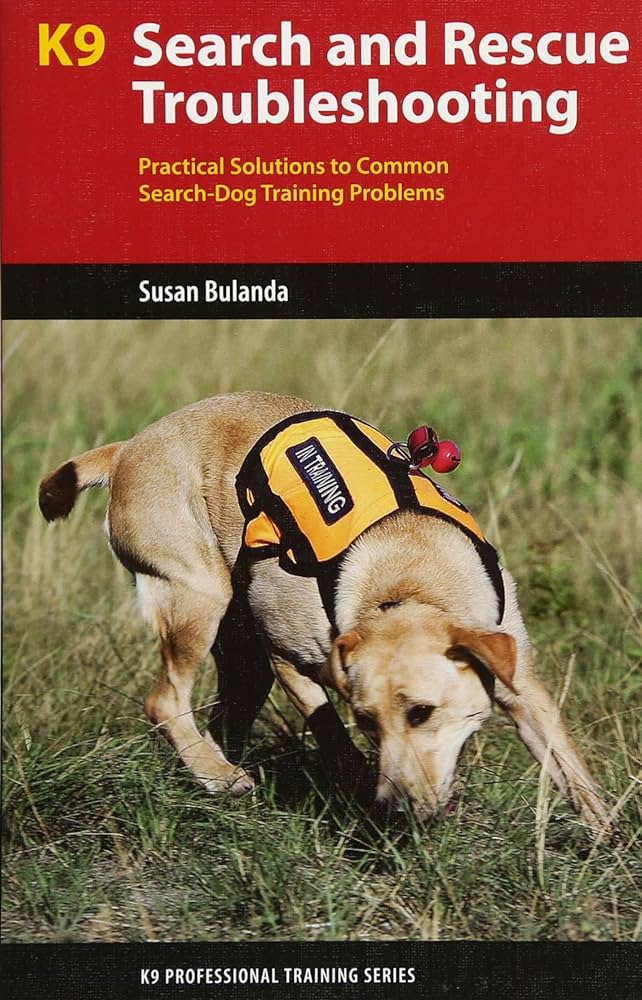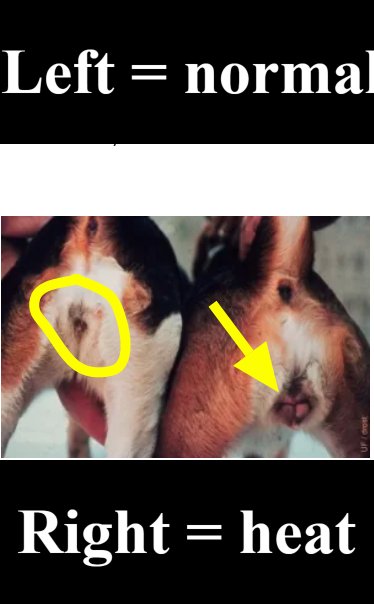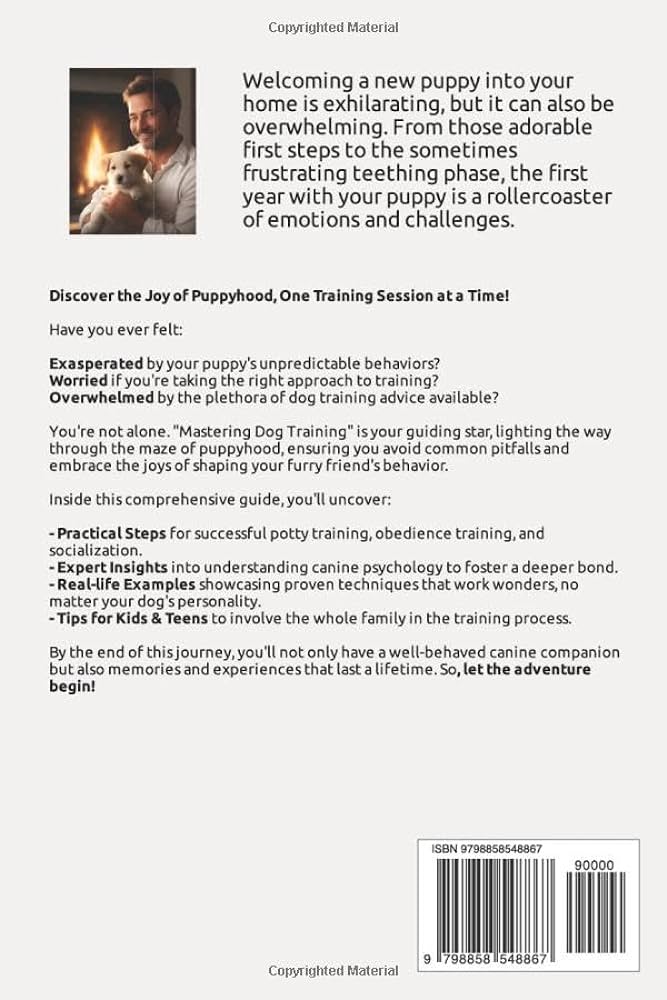How to Deal With Dog Behavior Problems: Practical Solutions.
Last Updated on September 9, 2024 by Petpalace54
To deal with dog behavior problems, start by using prevention techniques and teaching your dog the desired behavior instead of punishing it for the undesired one. Then, use positive reinforcement and force-free corrections sparingly to correct any bad behavior.
If you’re struggling with a misbehaving dog, you are not alone. It is common for dogs to exhibit some undesirable behavior from time to time. However, dealing with such behavior can be stressful and challenging, especially when you don’t know what to do.
Fortunately, there are various effective approaches you can use to correct bad dog behavior. We will explore some techniques you can apply to deal with dog behavior problems. We will also take a look at some popular dog behavior books and useful tips to help calm an excited dog.

Credit: www.amazon.com
Table of Contents
Understanding Dog Behavior Problems
Dealing with your dog’s behavior problems can be a challenging task, but with proper understanding, you can turn things around. It is crucial to teach your dog the right behavior by reinforcing positive actions and interrupting negative behavior patterns. With consistency and patience, you can effectively correct your dog’s bad habits.
Common Dog Behavior Problems
Understanding dog behavior problems is the first step to tackling them effectively. As a dog owner, it is important to be aware of the most common dog behavior problems such as aggression, barking, destructive behaviors, and separation anxiety. These problems can be frustrating for owners, but they are often manageable with the right training and behavior modification techniques.Types Of Bad Dog Behavior
Bad dog behavior is typically characterized by actions that are not desirable or expected by dog owners. Some common types of bad dog behavior include excessive barking, chewing, digging, jumping, and aggression towards other animals or people. Each of these behaviors can be addressed through a variety of training techniques and behavioral modification methods.Root Causes Of Dog Behavior Problems
Dog behavior problems often have root causes that need to be addressed in order to effectively manage the problem behavior. Some possible causes of bad behavior in dogs include lack of socialization, fear, anxiety, boredom, or medical issues. Understanding the root cause of the behavior is important for determining the most effective approach to managing the behavior.In order to fix bad dog behavior, there are several approaches that can be taken, including positive reinforcement training, behavior modification techniques, and management strategies. It is important to approach the problem with patience, consistency, and a thorough understanding of the root cause of the behavior. With the right approach, most dog behavior problems can be effectively managed, allowing both the dog and owner to enjoy a happier, healthier relationship.Dog Behaviour Books
Looking for ways to deal with dog behavior problems? A dog behaviour book might be just what you need. Whether you’re dealing with barking, biting, or digging, there are plenty of resources available to help you better understand your dog and address their behaviour issues.
If you’re dealing with dog behavior problems, finding the right training and guidance is crucial. There are many resources available, but dog behavior books can be especially helpful. Here are some great options to consider:Don’t Shoot The Dog!: The New Art Of…
This classic book by Karen Pryor is based on the principles of positive reinforcement and how it can be used to train dogs effectively. It helps dog owners understand the importance of training without resorting to punishment or harsh methods.The Culture Clash
Jean Donaldson’s book is a must-read for any dog owner who wants to understand their dog’s behavior better. The Culture Clash explores the ways in which dogs and humans communicate differently and how this can lead to misunderstandings and behavior problems.Zak George’s Dog Training Revolution…
This book by Zak George offers a comprehensive guide to dog training that is based on positive reinforcement and modern, science-based methods. It covers a wide range of topics, from basic obedience to more complex issues like fear and aggression.The Dog’s Mind
Bruce Fogle’s book is a fascinating look at the inner workings of the canine mind. It explores how dogs perceive the world around them and how their behavior is shaped by instinct, environment, and genetics.Decoding Your Dog: Explaining…
This book, written by a group of certified applied animal behaviorists, offers practical advice for dealing with a wide range of behavior problems in dogs. It helps dog owners understand the root causes of these problems and provides effective solutions.The Puppy Primer
This book is an essential resource for anyone who is bringing a new puppy into their home. It covers everything from basic obedience to socialization and housetraining, offering practical tips and advice for ensuring that your puppy grows up to be a well-behaved and happy dog.In conclusion, if you’re dealing with dog behavior problems, these books can provide valuable insights and guidance. Whether you’re looking for basic obedience training or more intense behavior modification, there is a book out there that can help you and your furry friend.Solutions To Dog Behavior Problems
Dealing with dog behavior problems can be a challenge, but there are solutions. Effective management and prevention, positive reinforcement, teaching the desired behavior, and using force-free corrections sparingly can all help address unwanted behaviors. It is also important to understand that some dogs may require medication to address emotional disorders and abnormal behaviors.
Solutions to Dog Behavior ProblemsEvery pet owner experiences dog behavior issues at some point. But it should not be a reason to give up on your furry friend. With the right approach, most dog behavior problems can be solved. In this blog post, we’ll look at some solutions to common dog behavior problems.Positive Reinforcement TrainingPositive reinforcement is a powerful tool that can be used to train your dog in a positive way. This technique involves rewarding your dog for good behavior. It can be as simple as praising your dog or offering a treat. Positive reinforcement training helps to build a strong relationship between you and your dog.Management and PreventionManagement and prevention are crucial when dealing with dog behavior problems. Prevention means limiting exposure to situations that may trigger your dog’s negative behavior. Management, on the other hand, involves setting up situations and environments to help reduce the likelihood of your dog misbehaving.Use a Positive InterrupterA positive interrupter is a sound or phrase that breaks your dog’s focus on a negative behavior. It’s a useful tool to redirect your dog’s attention to something positive. For example, if your dog is barking excessively, you can use a positive interrupter like a whistle to get your dog’s attention and redirect it.Remove ReinforcementRemoving reinforcement is another technique that can be used to deal with dog behavior problems. This technique involves removing something the dog finds rewarding when it performs a negative behavior. For example, if your dog jumps up on you when you come home, ignore it until it stops the behavior.Teach What You Want Your Dog to DoOne of the best ways to deal with dog behavior problems is to teach your dog what you want it to do. Instead of punishing your dog for undesirable behavior, focus on positive training techniques. For example, teach your dog to sit on command, and reward it every time it does so.Use Force-Free CorrectionsForce-free corrections are corrections that do not involve physical punishment or yelling. This technique involves redirecting negative behavior to something positive. For example, if your dog is chewing your shoes, you can redirect it to a chew toy instead of yelling or hitting it.Behavioral Modification TechniquesIf the dog behavior problem is severe, behavioral modification techniques may be necessary. This technique involves addressing the underlying cause of the behavior problem. A professional dog trainer or behaviorist can help with this.ConclusionDog behavior problems can be frustrating for pet owners, but with patience, persistence, and the right approach, they can be resolved. By using positive reinforcement training, management and prevention, positive interrupters, removing reinforcement, teaching what you want your dog to do, using force-free corrections, and behavioral modification techniques, you can help your furry friend overcome any behavior problem.
Credit: www.dogwise.com
How To Calm Down A Misbehaving Dog
If you have a misbehaving dog, it’s important to remain calm and use positive reinforcement techniques such as giving affection or using a favorite toy to reward good behavior. Avoid reinforcing bad behavior and consider hiring a professional dog trainer or behaviorist for help.
Positive Reinforcement For Good Behavior
One effective method to calm down a misbehaving dog is to reinforce good behavior. This approach involves rewarding the dog with treats, toys, or praise when he behaves appropriately. This method can help the dog understand that good behavior results in positive reinforcement, and he will be more likely to repeat the same behavior in the future.Use Of Affection Or A Favorite Toy
Another effective technique to calm down a misbehaving dog is to use affection or a favorite toy. This approach involves comforting or distracting the dog with a favorite toy or cuddles. Dogs are social animals and often need physical touch to feel reassured. By using this technique, you can help your dog feel more relaxed and less stressed, reducing his chances of misbehaving.Ignore Unwanted Behavior
Sometimes, ignoring unwanted behavior can be an effective way to calm down a misbehaving dog. This approach involves withholding attention or affection when the dog acts out. By ignoring his bad behavior, you can reduce the reinforcement he receives, and he will be less likely to repeat it in the future.Stop Fun Activities When The Dog Acts Out
Another technique is to stop fun activities when the dog misbehaves. This method requires you to stop any fun activities like playing or running when the dog starts to act out. By doing so, you can help your dog understand that his behavior is unacceptable and that he cannot continue to enjoy the activities he likes if he behaves poorly.In conclusion, there are several ways to calm down a misbehaving dog, and it is important to find the approach that works best for your dog. By using positive reinforcement, affection, ignoring unwanted behavior, or stopping fun activities, you can help your dog learn appropriate behavior and reduce his chances of misbehaving. Remember to stay patient and consistent in your training to achieve the best results.Professional Help For Dog Behavior Problems
Dealing with dog behavior problems can be challenging, but seeking professional help can make all the difference. Pet behaviorists and trainers in Austin, Texas, such as Full Spectrum Canine and Chasing Life Dog Training, are available to provide tailored solutions to address specific issues like biting, barking, and digging.
By identifying triggers and applying positive reinforcement techniques, pet owners can better manage and correct their pets’ behaviors.
Dealing with dog behavior problems can be a challenging task for any pet owner. While some behaviors can be corrected with training and patience, there are others that require professional help. Behavioral issues like aggression, anxiety, and destructive behavior can be rooted in deeper problems, and getting expert assistance from a pet trainer or behaviorist is essential. In this section, we will discuss the signs that indicate that you need professional help, how to find the right pet trainer or behaviorist, types of professional solutions available, and how to ensure the effectiveness of professional help.Signs That You Need Professional Help
It can be tough to determine when a dog’s behavior becomes problematic and when it is time to ask for professional help. However, there are a few signs that indicate that you need the assistance of a pet trainer or behaviorist. These include:- Aggression towards other dogs or people
- Excessive barking or howling
- Destruction of property or furniture
- Anxiety and fearfulness leading to withdrawal, hiding or aggression
- Obsessive-compulsive behavior
Finding The Right Pet Trainer Or Behaviorist
To address your dog’s behavioral issues effectively, you need to find a trained and experienced pet trainer or behaviorist. Here are some tips to help you find the right professional:- Look for a professional who has experience in treating your dog’s specific issues.
- Check for certification or accreditation by organizations such as the Certification Council for Professional Dog Trainers (CCPDT).
- Ask for referrals from friends, family, or your veterinarian.
- Always research and review the reputation and effectiveness of a potential pet trainer or behaviorist before hiring.
Types Of Professional Solutions
Pet trainers and behaviorists use a range of professional solutions to address dog behavior problems, including:| Training Method | Description |
|---|---|
| Positive reinforcement training | A method that involves rewarding good behavior with treats, toys, or praise. |
| Clicker training | A training technique that uses a clicker to reinforce good behavior. |
| Counter-conditioning and desensitization | A method that changes a dog’s emotional response to specific stimuli that cause fear or anxiety. |
| Medications | In some cases, medication can help address dog behavior problems such as anxiety, phobias, or aggression in combination with other treatments. |
Effectiveness Of Professional Help
The effectiveness of professional help in addressing dog behavior problems depends on several factors, including the severity of the behavior, consistency, and the willingness of the pet owner to follow the trainer or behaviorist’s instructions. If you have observed an improvement in your dog’s behavior, it is important to maintain the training with consistency. Additionally, always consult with your trusted vet when there are behavioral changes or problems with your dog. They may provide insight and sometimes medical interventions to help you and your dog during this process.
Credit: www.dogwise.com
Frequently Asked Questions Of How To Deal With Dog Behavior Problems
How Do You Fix Bad Dog Behavior?
To fix bad dog behavior, start with management to prevent the behavior. Remove any reinforcement for the bad behavior and teach the dog what you want them to do instead. Use a positive interrupter and use force-free corrections sparingly. Positive reinforcement for good behavior is important.
Avoid punishments and instead reward and reinforce the behavior that you want.
Can Behavioral Issues In Dogs Be Fixed?
Yes, behavioral issues in dogs can be fixed. With proper behavior modification techniques, positive reinforcement, and environmental modifications, owners can effectively correct their dog’s unwanted behavior. It’s important to avoid using force and seek medication and professional help if necessary, especially if there is an underlying emotional or mental disorder at play.
How Do You Calm Down A Misbehaving Dog?
Use positive reinforcement for good behavior. This can be affection, exercise, or a favorite toy. Ignore bad behavior, end fun activities when the dog misbehaves, and reinforce good behavior. Train your dog what you expect them to do. Positive reinforcement is the key to training away aggressive instincts.
What Can I Do For My Dog With Behavior Problems?
Exhibits specific problematic behaviors, it’s best to first address the cause of the behavior. Working with a professional dog trainer or behaviorist can also be beneficial in creating a plan to modify behavior. Additionally, making sure your dog is getting plenty of exercise, mental stimulation, and a balanced diet can all contribute to improving behavior.
Consistency, patience, and a willingness to work with your dog will ultimately lead to the best outcomes.
Conclusion
Dealing with dog behavior problems is not an easy task, but with patience and consistency, you can overcome them. Remember, management is the key to efficient problem-solving, so don’t hesitate to prevent problematic behavior while working on modifying it. Positive reinforcement and force-free corrections should be used sparingly to avoid exacerbating the situation.
Additionally, dogs require regular exercise, mental stimulation, and proper nutrition to promote good behavior. By following these tips and seeking the help of a professional if needed, you can achieve a happy and healthy relationship with your furry friend.






